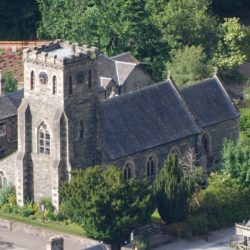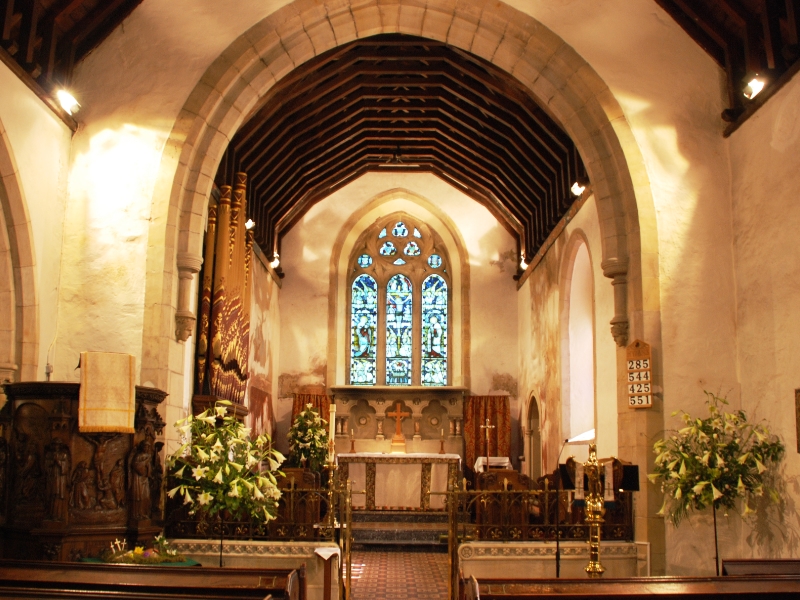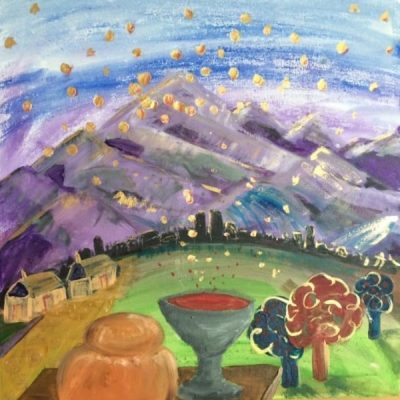
THE SCOTTISH EPISCOPAL CHURCH
The Diocesan of St Andrews, Dunkeld and Dunblane is looking to fill the following part-time position:
ST MARY’S BIRNAM AND DUNKELD – PRIEST IN CHARGE
St Mary’s is situated in the village of Birnam on the River Tay at the gateway to the Highlands.
St Mary’s has a thriving congregation where there is a strong sense of community and willingness to serve the needs of the wider local community.
We are seeking a part-time priest in charge (0.5 stipend) who is attracted to the opportunity to practise their ministry in a beautiful part of rural Perthshire. We seek someone who is sensitive to the changing needs of the community, who is able to work collaboratively with community groups and other church denominations for the benefit of all.
The Vestry wishes to recruit a priest who is keen to serve for 2.5 days a week, including Sunday worship, who wishes to help us grow whilst providing a source of pastoral care for our people. A recently fully refurbished rectory comes with the post.
For details, the application form and a copy of the congregational profile please contact Adrian Freer, Vestry Secretary.
The closing date for applications is 30th September and interviews are to be held at St Mary’s a few weeks later.
Feel free to reach out to us if you need any help. All our contact details are below.

Weekly
Sundays 10am Service of Holy Communion – all welcome, refreshments served afterwards
(N.B. On the third Sunday of each month this is an Every Age Service, i.e. a more informal style of worship but still including Holy Communion)
Fridays 6pm Silence and Supper (at Servite House, Willowbank, Birnam) – a half-hour of silent prayer, followed by fellowship and a simple supper
Monthly
First Thursday of the month, 2 – 3pm’ All Together Now’ – dementia-friendly musical concerts with professional singer Colleen Nicoll, with refreshments
Last Sunday of the month 6.30pm Healing Service – venue alternates between St Mary’s, Little Dunkeld Kirk and the Cathedral
As a church family, we are aware that bringing young children into a traditional church setting can be a little daunting. But, If you feel that you would like to explore our space and service as a family please get in touch for a chat about how we can enable you to be comfortable.
At present, there are no young families or teenagers attending regularly. This is not by design, we would be blessed to become a more generational church and the only way we can do that is to begin. Yes, there will be some bumps along the way but we can all learn together. There will be no one ‘hushing you up’!
Anyone wishing to bring their well-behaved family dog along is very welcome! they will even receive a blessing.
We look forward to welcoming you to St Mary’s Church.
The Ministry of Presence: Walking the Emmaus Road – Moving forward

In our fast-paced world, it’s easy to be consumed by worries about tomorrow or regrets of yesterday. Yet, Scripture reminds us to embrace the beauty of each moment, trusting that God is with us in the present.
Jesus Himself taught this when He said, “Therefore do not worry about tomorrow, for tomorrow will worry about itself. Each day has enough trouble of its own.” (Matthew 6:34). Being present allows us to fully experience His blessings, cherish the people around us, and serve Him wholeheartedly.
For me, recent ministry has been deeply rooted in presence—in simply being there, listening, and embodying Christ’s love in Birnam and Dunkeld. I have found joy in walking alongside others, sharing in their lives, and witnessing God at work in the quiet, everyday moments. Like Mary, who chose to sit at Jesus’ feet instead of being distracted by many tasks (Luke 10:38-42), I have learned to pause, to be still, and to recognize God’s presence in all things.
Now, as I transition from stipendiary ministry to a new path -one of spiritual accompaniment – I step forward with trust, knowing that God’s presence continues to guide me.
This new calling is an Emmaus journey, walking alongside strangers in sacred conversation, listening, discerning, and witnessing the quiet movements of the Holy Spirit. Just as Jesus revealed Himself to His companions on the road to Emmaus, I pray that in each encounter, hearts may flower like springtime with recognition of His presence.
June brings new beginnings, longer days, and fresh opportunities.
As I reflect on the journey so far, I am grateful for the privilege of being present—for the conversations, the shared laughter, and the moments of prayer. Each interaction is a sacred gift, a reminder that God is at work in ways both seen and unseen.
May we embrace today with gratitude, knowing that every moment is a gift from our Creator and every step on the journey brings us closer to Him.
Living in Awareness of His Presence To cultivate a deeper awareness of God’s presence, we can:
God’s presence is not just a theological concept—it is a lived reality. It is the peace that surpasses understanding, the strength in times of weakness, and the joy that fills our hearts.
Go well friends it has been a pleasure to be present with you all.
New Revised Standard Version. Mark 12:28-34
One of the scribes came near and heard them disputing with one another, and seeing that he answered them well, he asked him, “Which commandment is the first of all?” Jesus answered, “The first is, ‘Hear, O Israel: the Lord our God, the Lord is one; you shall love the Lord your God with all your heart, and with all your soul, and with all your mind, and with all your strength.’ The second is this, ‘You shall love your neighbour as yourself.’ There is no other commandment greater than these.” Then the scribe said to him, “You are right, Teacher; you have truly said that ‘he is one, and besides him, there is no other’; and ‘to love him with all the heart, and with all the understanding, and with all the strength,’ and ‘to love one’s neighbour as oneself,’—this is much more important than all whole burnt offerings and sacrifices.” When Jesus saw that he answered wisely, he said to him, “You are not far from the kingdom of God.” After that, no one dared to ask him any questions.

It can be used for a mindful journey or to help one to be fully present in the now.
Just trace the pattern with your finger and either say a prayer as you go or empty your mind allowing the silence to be the prayer.
You can click on the labyrinth to make it larger!